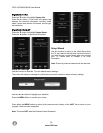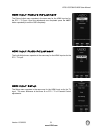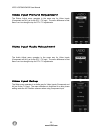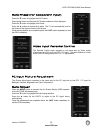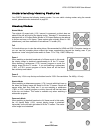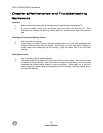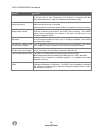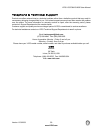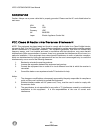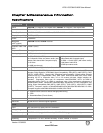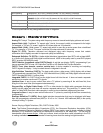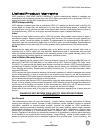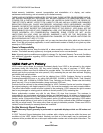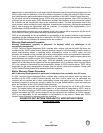
VIZIO VO370M/VO420E User Manual
58
www.VIZIO.com
Problem Solution
cover the entire screen. Display (OSD) are set correctly.
If you are using TV, AV-C (Composite), AV-S (S-Video) or Component with 480i
input, follow instructions in page 42 to obtain the desired screen mode.
You can see a picture but you
cannot hear sound.
Make sure that the volume is not turned down.
Make sure that the sound is not muted.
Make sure that your audio input source cables are connected securely and correctly.
The TV has pixels that are
always dark or colored.
Your FHDTV is manufactured using an extremely high level of precision technology,
however, sometimes some pixels of your FHDTV may not display. Pixel defects
within industry specifications are inherent to this type of product and do not
constitute a defective product.
You see “noise” or “trash” on
the screen.
When your FHDTV’s digital capabilities exceed a digital broadcast signal, the signal
is up-converted (increased) to match your TV’s display capabilities. Up-converting
can cause noise or trash.
You switch to a different input
and the volume changes.
The TV remembers the volume level from the last time you adjusted it. If the sound
level is higher or lower from another source, then the loudness will change.
You switch to a different input
and the screen size changes.
The TV remembers the viewing mode from the last time you used a particular input
(AV-C (Composite), AV-S (S-Video), Component, HDMI and TV).
Tips for High-Definition Users. The FHDTV is an ideal platform for viewing High Definition Content.
Best Image Quality will be achieved by the HDMI Input, then YPbPr, then RGB.
However, due to variances in broadcast practices, it is possible some image
distortions can occur.
Tips for Letterbox Content
Users.
Letterboxed (or “Widescreen”) versions of DVD movies are most commonly
formatted for standard 4:3 Televisions. The FHDTV has the capability of expanding
this content so the entire screen is filled at the expense of image accuracy. Follow
the instructions in page 32.



